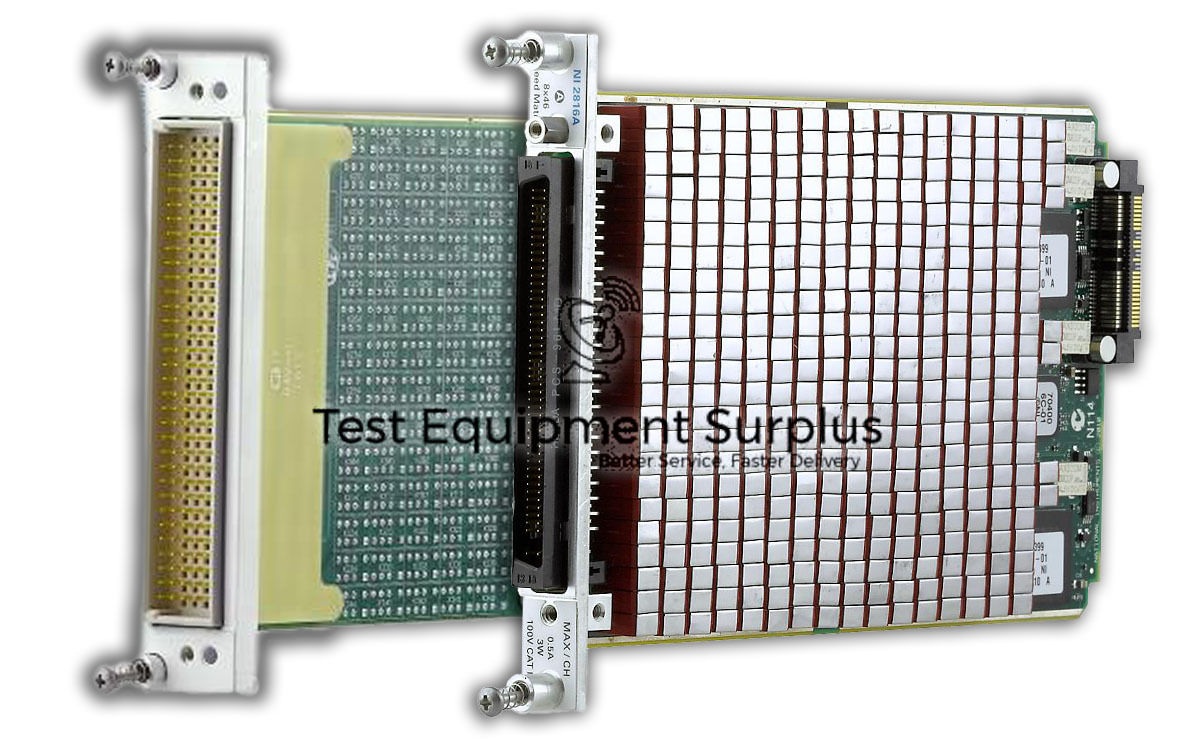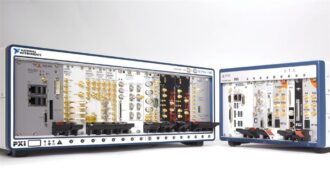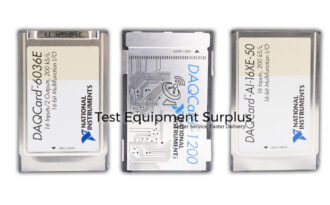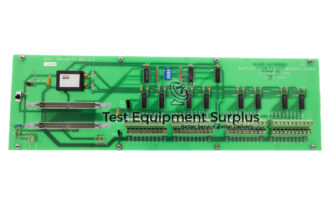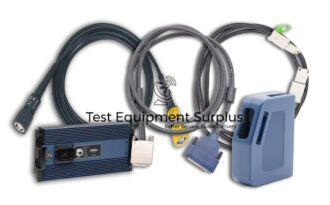Description
The National Instruments SWB-2810 Matrix Module for SwitchBlock, identified by part numbers 781421-10 and 781420-10, is designed to handle a current rating of 1 A and allows for flexible configurations starting with a 4 x 43 matrix and expandable up to a 4 x 1032 matrix. It operates safely within a maximum voltage of 150 V and supports a maximum power capacity of 20 watts. With reed relays made from durable Iridium contact material, the module boasts swift relay operation times of less than 1 millisecond for up to 8 relays and less than 2 milliseconds for up to 50 relays.
The module’s carrier requires 20 watts of power at 5 V or 5 watts at 3.3 V, and it features a 96-position SCSI I/O connector for robust connectivity options. Capable of driving 176 relays simultaneously, this Matrix Module is designed for long-term reliability with a high expected electrical and mechanical relay life. Each relay on the module requires up to 50 mW of power to operate, ensuring that the total power consumption for all relays does not exceed 8.8 watts. The NI SWB-2810 is classified as a CAT I device, making it suitable for use in systems with voltages below 150 V.
| Specification | Detail |
|---|---|
| Part Numbers | 781421-10, 781420-10 |
| Module Type | National Instruments SWB-2810 Matrix Module for SwitchBlock |
| Current Rating | 1 A |
| Matrix Configuration | 4 x 43 Matrix Module, expandable up to 4 x 1032 matrixes |
| Maximum Voltage | 150 V |
| Maximum Power | 20 watts |
| Relay Operation Time | < 1 ms for up to 8 relays, < 2 ms for up to 50 relays |
| Power Requirement for Carrier | 20 watts at 5 V, 5 watts at 3.3 V |
| I/O Connector | 96-position SCSI |
| Maximum Simultaneous Relays | 176 relays |
| Relay Contact Material | Iridium |
| Electrical/Mechanical Relay Life | High expected life |
| Power per Relay | Up to 50 mW |
| Total Power Consumption for Relays | Not to exceed 8.8 watts |
Question 1: What is the impact on operation times when the National Instruments SWB-2810 Matrix Module for SwitchBlock controls up to 50 relays compared to just 8 relays?
Answer 1: The National Instruments SWB-2810 Matrix Module can be configured in a range from a 4 x 43 matrix to a 4 x 1032 matrix and is capable of driving 176 relays simultaneously.
Question 2: What is the range of matrix configurations available for the National Instruments SWB-2810 Matrix Module for SwitchBlock, and what are its key electrical specifications and connectivity features?
Answer 2: The National Instruments SWB-2810 Matrix Module can operate up to 176 relays simultaneously, and each relay requires up to 50 mW of power to operate.
Question 3: What is the range of matrix configurations possible with the National Instruments SWB-2810 Matrix Module, and how many relays is it capable of driving simultaneously?
Answer 3: The National Instruments SWB-2810 Matrix Module has a maximum voltage rating of 150 V and power requirements of 20 watts at 5 V or 5 watts at 3.3 V; its scalability allows for configurations from a 4 x 43 to a 4 x 1032 matrix, and with relay operation speeds of less than 1 millisecond for up to 8 relays and less than 2 milliseconds for up to 50 relays, it benefits users needing
Question 4: What is the maximum number of relays the National Instruments SWB-2810 Matrix Module can operate simultaneously, and how much power does each relay require?
Answer 4: The National Instruments SWB-2810 Matrix Module for SwitchBlock offers matrix configurations ranging from 4 x 43 to 4 x 1032, has a current rating of 1 A, a maximum voltage of 150 V, a maximum power capacity of 20 watts, includes a 96-position SCSI I/O connector for connectivity, and can drive up to 176 relays simultaneously with each relay requiring up to 50 mW of power, ensuring the module’s total power consumption does
Question 5: What are the voltage ratings and power requirements for the National Instruments SWB-2810 Matrix Module, and how does its scalability and relay operation speed benefit users requiring configurable switch matrices?
Answer 5: When the National Instruments SWB-2810 Matrix Module for SwitchBlock controls up to 50 relays, the operation time increases to less than 2 milliseconds, compared to less than 1 millisecond when controlling just 8 relays.

